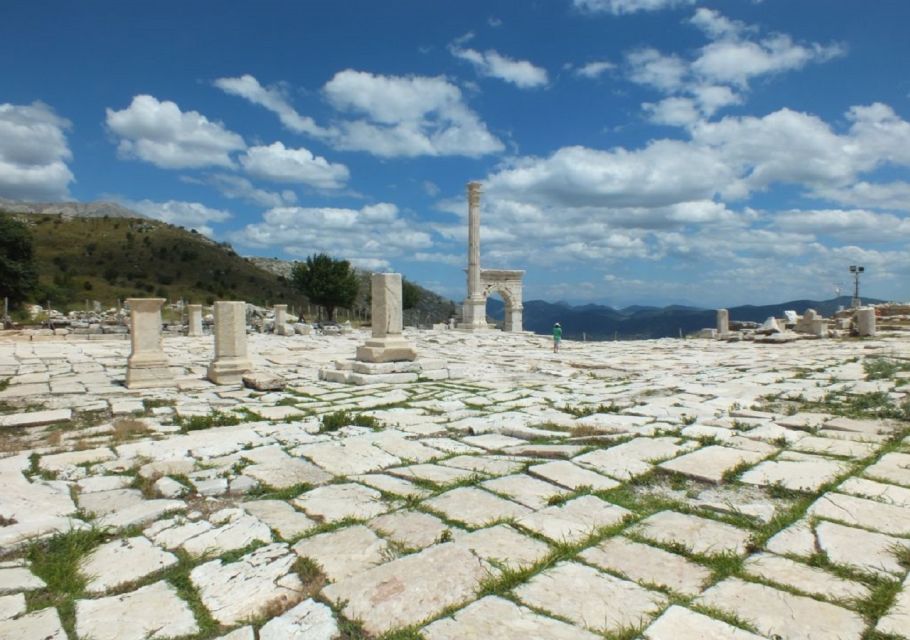Sagalassos, perched in the Taurus Mountains near Burdur, Turkey, stands as an enduring symbol of ancient innovation and cultural brilliance. Established in the 5th century BCE, this once-thriving city transitioned from the Hellenistic Kingdom of Pergamon to become a prominent urban center under Roman rule, flourishing as a key city in Pisidia.

Architectural Marvels of Sagalassos
Sagalassos is celebrated for its impressive architectural feats, reflecting its historical and cultural significance. Notable landmarks include:
The Theater
An iconic semi-circular structure with a seating capacity for thousands, the theater provided panoramic views of the surrounding mountains. It was a hub for performances and civic gatherings, symbolizing the city’s cultural vibrancy.

The Roman Baths
These baths exemplify the sophistication of Roman engineering. Featuring hot and cold chambers, the baths served as spaces for hygiene, socialization, and relaxation, showcasing the Romans’ emphasis on public welfare.

The Nymphaeum
This monumental fountain, adorned with exquisite sculptures, functioned as both a decorative centerpiece and a practical source of water, underscoring the city’s advanced water management system.

Other significant sites include temples, libraries, and bustling agoras, all of which highlight Sagalassos as a cultural and economic hub.
Economic Significance
Sagalassos was famed for its ceramic production, exporting high-quality pottery across the Roman Empire. Archaeological findings reveal intricately crafted terracotta artifacts, which not only demonstrate the city’s prominence in ancient trade networks but also provide insight into its economic ingenuity.

Decline and Rediscovery
The decline of Sagalassos began with a series of devastating earthquakes in the 6th and 7th centuries CE. These natural calamities, combined with economic struggles and shifts in trade routes, led to its eventual abandonment. For centuries, the city lay hidden beneath layers of history, its stories waiting to be uncovered.

In the late 20th century, archaeologists rediscovered Sagalassos. Extensive excavations have since revealed remarkably preserved structures, mosaics, and everyday artifacts. These findings offer a window into ancient urban planning, social hierarchies, and daily life in Anatolia.
Legacy and Modern Relevance
Today, Sagalassos stands as a UNESCO World Heritage tentative site, drawing scholars, archaeologists, and tourists alike. Its ruins not only evoke the grandeur of a bygone era but also inspire contemporary efforts in heritage preservation.
Sagalassos continues to remind us of the ingenuity and resilience of ancient civilizations. From its awe-inspiring architecture to its rich trade history, the city remains a timeless witness to the enduring legacy of human innovation.
